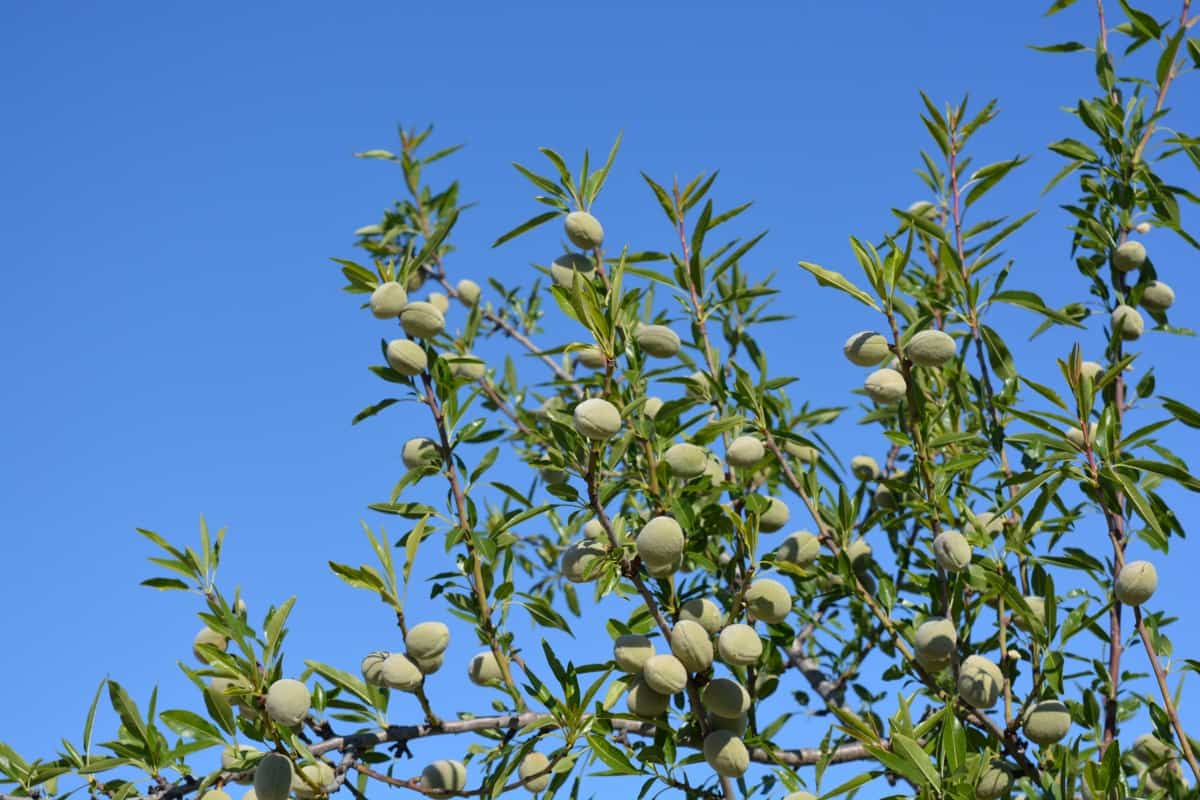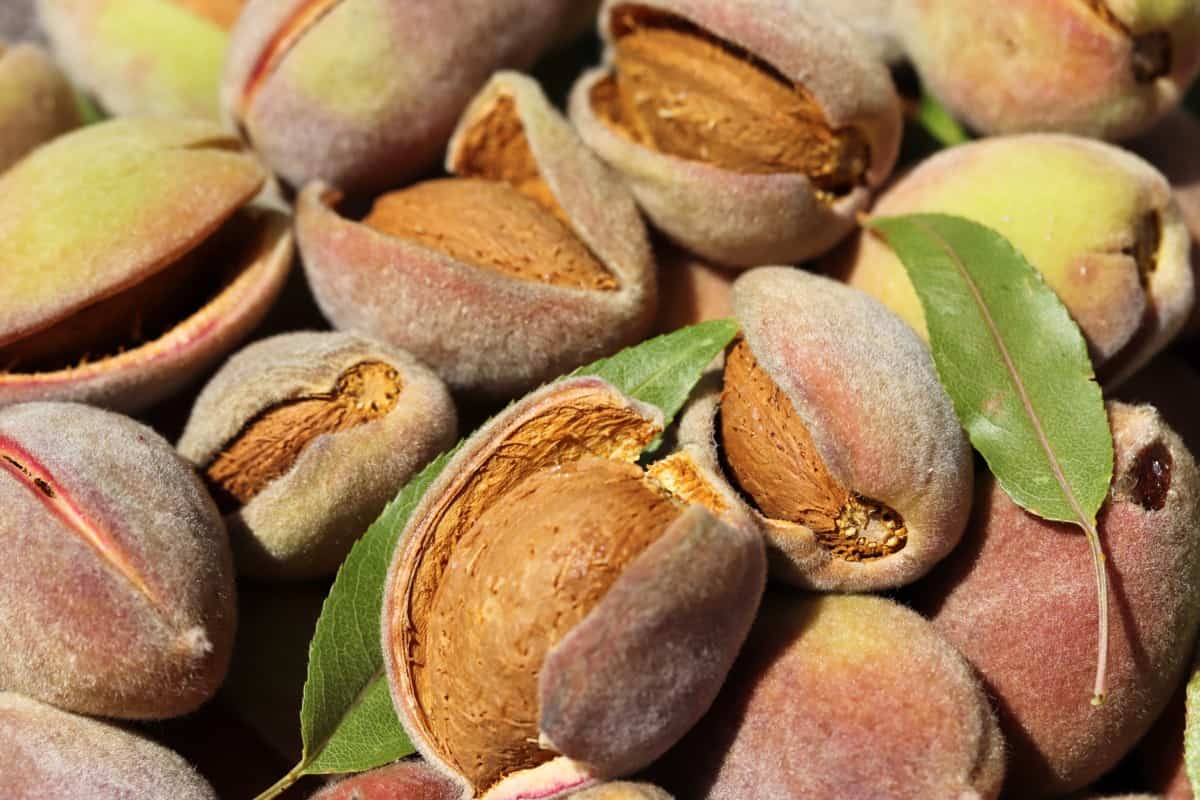Almond farming is a profitable and sustainable business in the USA. The demand for almonds is increasing globally, which makes it an attractive crop for farmers. Below we learn the Almond cultivation procedure and a step-by-step guide to starting your own almond farm.

How to Start Almond Farming in the USA
Market Research
Before starting any farming venture, it is crucial to conduct market research to understand the demand for the crop and the competition. Almond farming is no exception. By conducting market research, you can determine the market size, target market, and price of almonds. You can attend trade shows, visit local markets, and network with other farmers to gather this information. You can also conduct online research to determine the demand for almonds in your area and identify any gaps in the market that you can fill.
Right Location
Almond farming requires specific climatic conditions. Therefore, it is essential to choose the right location. The ideal location for almond farming is where the temperature is warm and dry, with low humidity. California is the best location for almond farming in the USA because of its climate and suitable soil conditions. If you live outside of California, you should research the climate in your area to determine if it is suitable for almond farming. You can consult with local agricultural extension offices or other farmers in your area to determine if almond farming is feasible.
Acquire Land
Acquiring land is the next step in starting almond farming. You can buy or lease the land for farming. When selecting the land, ensure it has the right soil conditions and access to water for irrigation. You should also consider the land size you need for almond farming. The amount of land you need will depend on the size of your operation and the variety of almonds you plan to grow. Additionally, you should consider the cost of the land and any zoning regulations that may impact your farming operation.
Prepare the Soil
Soil preparation is crucial for the success of almond farming. Almonds grow well in well-drained soils with a pH of 6.0 to 7.5. The soil must be tilled to loosen and remove any weeds or debris. If the soil is not suitable, adding soil amendments to improve its fertility is advisable. You can test your soil to determine its pH and nutrient content. Based on the test results, you can determine the type and amount of soil amendments you need to add. You can also consult with local agricultural extension offices or other farmers in your area for advice on soil preparation.
Almond Varieties
Choosing the right almond variety is essential for a successful farming venture. There are two types of almond varieties; the Nonpareil and the pollinator varieties. The Nonpareil variety is self-fertile, while the pollinator varieties require cross-pollination to produce fruit. You should consider yield, disease resistance, and harvest time when selecting the almond variety. You can consult with local nurseries or other farmers to determine the best variety for your area.
In case you missed it: How to Start Orange Farming in the USA: A Step-by-Step Production Guide

Plant the Almond Trees
After selecting the right almond variety, it is time to plant the almond trees. You can either plant them by hand or use a mechanical planter. When planting, ensure enough space between the trees for proper growth and irrigation. The spacing of the trees will depend on the variety of almonds you are planting and the irrigation system you plan to use.
Irrigation
Almonds require a significant amount of water for growth and development. Therefore, it is essential to have an irrigation system in place. The most common irrigation methods for almond farming are drip irrigation and micro-sprinklers. When selecting an irrigation system, you should consider factors such as the size of your operation, the type of soil you have, and the water availability in your area.
Drip irrigation involves hoses with small holes that deliver water directly to the tree’s base. This method conserves water and reduces the risk of disease. Micro-sprinklers involve small sprinklers that deliver water to the base of the tree. This method is more effective in areas with high winds or sandy soil.
Pest and Disease Control
Almond trees are prone to pests and diseases, significantly affecting yield and quality. It is essential to have a pest and disease control plan in place to prevent and manage infestations. You can use pesticides or natural methods such as companion planting to control pests and diseases. When developing a pest and disease control plan, you should consider factors such as the type of pests and diseases prevalent in your area, the type of almond variety you are growing, and the cost and effectiveness of different control methods.
Companion planting involves planting other crops or plants that can deter pests or attract beneficial insects. For example, planting marigolds or other plants with strong scents can deter pests, while planting flowers that attract bees can improve pollination.
Harvesting
Almonds are ready for harvesting when the hulls split, revealing the nut inside. Harvesting can be done manually or by using a mechanical shaker. After harvesting, the almonds need to be dried and stored properly. When harvesting manually, you can use a long pole to knock the almonds off the tree. A machine shakes the tree to remove the almonds when using a mechanical shaker.
You should harvest the almonds as soon as possible to prevent them from falling on the ground and being damaged.’You should harvest the almonds as soon as possible to prevent them from falling on the ground and being damaged. After harvesting, the almonds must be dried to prevent mold or rot. You can dry them in the sun or use a mechanical dryer. Once dry, the almonds should be stored in a cool, dry place to prevent spoilage. On average, almond farmers can earn a profit of $3,000 to $4,500 per acre.
Marketing
You must identify your target market and start developing a marketing plan. You can sell your almonds to processors or directly to consumers through local markets or online platforms. When developing a marketing plan, you should consider factors such as the price of almonds in your area, the demand for almonds, and the competition. You can also consider value-added products such as almond butter or almond milk.
In case you missed it: How to Start Pistachios Farming in the USA: A Step-By-Step Production Guide

Conclusion
Starting an almond farm requires careful planning and execution. You can start a successful almond farm in the USA by following the above steps.
- Ultimate Guide to Ossabaw Island Hog: Breeding, Raising, Diet, and Care
- Ultimate Guide to Juliana Pig: Raising Facts, Size, Diet, Care, and Lifespan
- Raising Lleyn Sheep: Disadvantages, Price, Uses, Characteristics, and Care
- Ultimate Guide to Meishan Pig: Breed Facts, Breeding, Raising, and Care
- Ultimate Guide to Teacup Pigs: Raising, Diet, Lifespan, Cost, and Care
- Guide to Raising Poll Dorset Sheep: Facts, Profile, Characteristics, Uses, and Care
- Ultimate Guide to Bighorn Sheep: Characteristics, Diet, Lifespan, Breeding, and Lifecycle
- Ultimate Guide to Raising Katahdin Sheep: Farming Facts, Breed Profile, Uses, and Care
- Ultimate Guide to Raising Oreo Cows: Belted Galloways Farming Facts, Profile, Uses, and Care